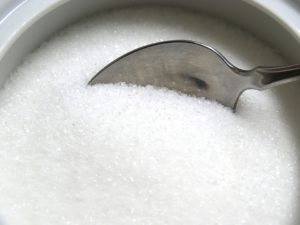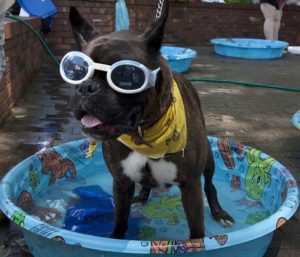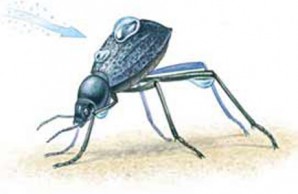 Your students may already be aware of some ways that hydrophilic polymers are used in our daily lives. For instance, Sodium Polyacrylate is an essential component of disposable diapers, and Growing Spheres are often used by florists as a soil-free way to store water and keep cut flowers fresh for a long time.
Your students may already be aware of some ways that hydrophilic polymers are used in our daily lives. For instance, Sodium Polyacrylate is an essential component of disposable diapers, and Growing Spheres are often used by florists as a soil-free way to store water and keep cut flowers fresh for a long time.
But what else can hydrophilic polymers do? The answer is, plenty!
Industrial Strength Hydrophilics
With your class, discuss ways that hydrophilic polymers are used in industry. Here are just a few of their current applications:
♦ The agricultural industry makes use of biodegradable hydrophilic materials whose water retention and water absorbing properties make them perfectly suitable for agricultural applications, particularly in water scarce regions. These super absorbent hydrophilic polymers increase crop yield and water use efficiency.
♦ Manufacturers of soft contact lenses rely upon hydrophilic polymers to increase the water content of the lenses, making them more comfortable for wearers. This lesson from the Royal Society of Chemistry offers a concise history of the polymer science used by lens manufacturers.
♦ Both the paper recycling and mineral processing industries use “froth flotation” to selectively separate hydrophobic materials from hydrophilic ones. This link includes helpful diagrams and videos that explain the process.
♦ And last but not least, the National Aeronautics and Space Administration (NASA) has been using sodium polyacrylate in its Maximum Absorbency Garments (MAGs) since 1988. These “space diapers” can hold two liters of fluid. For more on the history of these MAGs, consult “How Did NASA Change Diapers Forever?”
Biomimicry and Fog Harvesting
Thanks to the hydrophilic bumps on its wing scales, a certain type of African desert beetle is able to harvest water from early morning fog. The Namib beetle faces into the foggy wind and sticks its rear end up in the air. (This is known as fog-basking behavior.) Time and gravity do the rest. Scientists are exploring ways to mimic this astonishing natural ability for practical purposes.
What a great starter for a discussion on natural adaptation, surface tension, or many other scientific areas! For more details about this unique beetle and the ways its behavior is being studied, these articles are a great resource:
♦ “Water Vapor Harvesting” by AskNature.org
♦ “Like Water Off a Beetle’s Back” by Natural History Magazine
Natural Hydrophilics

Image: Pixabay
You might assume that hydrophilic substances are limited to the realm of the science lab, but that’s far from accurate. In fact, we use a variety of them every day!
Take salt, for instance, which easily dissolves in water. Or sugar… pears… oatmeal… oranges… all sorts of foods. And then there are household products like paper napkins, sponges, cotton fabric and much, much more.
According to “Specialty Polymers” by C.A. Finch (1987):
“Many foodstuffs—containing substantial amounts of carbohydrate and protein—can be classified as hydrophilic polymers, and some have important technical and industrial uses, apart from their nutritional value.
For example, although over 95% of the starches produced from corn (maize), wheat, potato, tapioca, and other vegetable sources are used as foods (human or animal), the remaining quantity represents an important part of the technical polymer market.
In fact, more than two-thirds of hydrophilic or water-soluble polymers used in industry are derived from polymers of natural origin from renewable resources (harvested crops, trees, waste animal products and so on), rather than petrochemical sources of finite availability.”
Ask your students how many naturally derived hydrophilic materials they can think of. Answers may include salt, sugar, paper, glass, seaweed, sponges, concrete, cotton, leather, etc. You can even look up “hydrophilic foods” for a complete index of healthy, edible examples.
NOTE: Students may offer soap as an example of a hydrophilic material. However, soap has a hydrophilic head and a hydrophobic tail, allowing it to dissolve in both water and oil. The Department of Physics at the University of Illinois at Urbana-Champaign offers this simple explanation.
Don’t Sweat It!

Image: Pixabay
Have you ever seen bicyclists, joggers, athletes, or other folks outdoors wearing a bandana during the sweltering summer months? There’s a chance that they’re beating the heat with more than just a regular piece of fabric.
Water-activated neck coolers have become popular among outdoor enthusiasts. They contain a hidden pouch with sodium polyacrylate crystals that can be soaked in water to provide moist, evaporative cooling for the wearer. The same crystals can be rehydrated many times.
Why not hold a class competition to see who can create their own variation on this idea? Students can create their own sodium polyacrylate-filled scarves, wristbands, or even helmet pads that will keep them cool!
The Worldwide SAP Market is… Expanding!
According to an October 2016 report, the global biodegradable superabsorbent polymer (SAP) market is expected to reach 190 million dollars by 2024, with polyvinyl alcohol leading the charge. Significant usage of bio-based, high-performance absorption polymers in adult incontinence products, disposable diapers, feminine hygiene products, and agriculture applications is likely to boost the industry growth over the forecast period.
Further key findings from the report suggest:
♦ The high birth rate in developing economies such as China, India, and Brazil is estimated to fuel the rapid development of the disposable baby diapers sector. This, in turn, is projected to positively affect the consumption of bio-based hydrophilic polymers in this industry in the future.
♦ Adult incontinence products generated more than 21 million dollars in revenue in 2015. The rising geriatric population across the globe is anticipated to impact the overall demand in the future. Furthermore, this population group is susceptible to various disorders such as urine incontinence and glandular diseases, which is another important health factor supporting the requirements for highly absorbing, hydrophilic materials.


